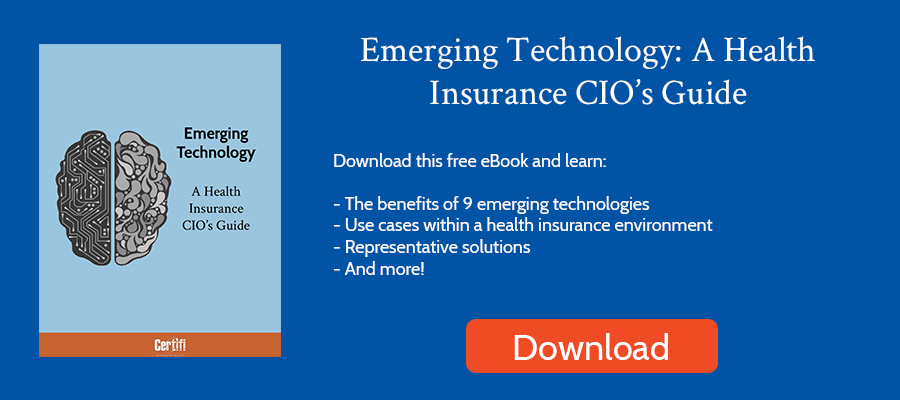The end of the zero interest rate environment has impacted technology companies aiming for revenue growth above all else. As a result of rising interest rates, higher inflation, and a looming recession, many organizations have implemented cost-cutting measures, including significant layoffs.
The health insurance industry is not immune from cost-cutting measures. Many startup health insurers like Friday, Bright Health, and Oscar have scaled down their territories recently to improve profitability.
But startup insurers aren’t the only payers seeking to be more cost-conscious. Even giants like Humana have undertaken business transformations to improve operations and reinvest in core markets like Medicare Advantage.
Here’s a look at four cost optimization strategies for health insurance CIOs to consider:
Cloud Solutions
Regulatory changes – like the electronic prior authorization rule and the No Surprises Act – are increasingly forcing health insurers to be more nimble. Unfortunately, most insurers still leverage inflexible legacy systems maintained by limited resources. Those solutions put health insurers at a competitive disadvantage.
Moving these legacy systems to the cloud can lead to more flexibility. But cloud solutions also use modern technology stacks that make them easier – and more cost-effective – to maintain. Plus, leveraging commercial off-the-shelf (COTS) cloud solutions instead of internally developed and on-premise software can save maintenance costs long-term.
Take our cloud-based health insurance premium billing solution as an example. We’ve integrated our modular billing solution into numerous upstream enrollment and administrative platforms and downstream accounting solutions. Most modern, cloud-based systems easily integrate with other data sources through APIs or other means. Those integrations make it easier to build a composable solution with swappable components. In essence, you’ll get a better technology solution that you can quickly replace if necessary.
Legacy Software Elimination
Eliminating legacy software goes hand-in-hand with implementing cloud solutions for many health insurers. For many insurers, those legacy solutions not only have associated IT business costs but may also be less performant than modern solutions, potentially adding operational labor costs to the mix.
Plus, we’ve seen industry consolidation introduce a patchwork of legacy solutions performing the same function within an organization. When two companies merge, they frequently fail to transition to a single solution, leaving multiple legacy systems for essentially the same purpose.
At a minimum, develop a roadmap to retire some of your legacy solutions. You’ll likely experience performance gains, reducing costs, as you transition to modern technology platforms.
Member Service Automation
The recent launch of ChatGPT shows the promise of artificial intelligence (AI) in delivering human-like, conversational experiences. But there are several other ways to automate member engagement processes to deliver better experiences while reducing labor costs.
You can identify areas for automation by creating a member journey map. Member journey maps help you visualize how members interact with your organization, helping you find areas that could benefit from automation.
Then, you can overlay technology on that process. Tools like Olive, Amelia, and Automation Anywhere are examples of automation solutions you can leverage to automate processes while improving member experiences.
The best way to leverage technology is to start with the end in mind. After you’ve mapped your processes, visualize the final experience before choosing tools. Many businesses find tools without fully defining what they want to accomplish. They find a technology solution and look for a solution to solve instead of defining an issue and looking for a solution to solve that issue.
Finally, measure everything. If you implement conversational AI, examine member feedback to understand the impact. After automating a process, performing before and after time and accuracy studies can help quantify results.
Claims Adjudication Optimization
Claims administration is generally the largest category of payer administrative expenses. As a result, optimizing and automating claims adjudication processes may be the most impactful of all the cost optimization strategies for health insurance CIOs.
Insurers commonly use robotic process automation (RPA) to automate claims administration processes. Robotic process automation helps automate simple, repetitive processes. Examples include transferring data from one internal system to another or validating customer data. Typically, RPA isn’t “smart,” but it can alleviate processes that require many keystrokes for a human to complete.
The next level of claims administration is leveraging AI to perform higher-level tasks like processing claims, validating eligibility and benefits, and assessing the medical diagnostic data with the provider’s contract. Health insurers can also leverage AI to manage denials, appeals, and fraud detection.
Certifi’s health insurance premium billing and payment solutions help healthcare payers improve member satisfaction while reducing administrative costs.



